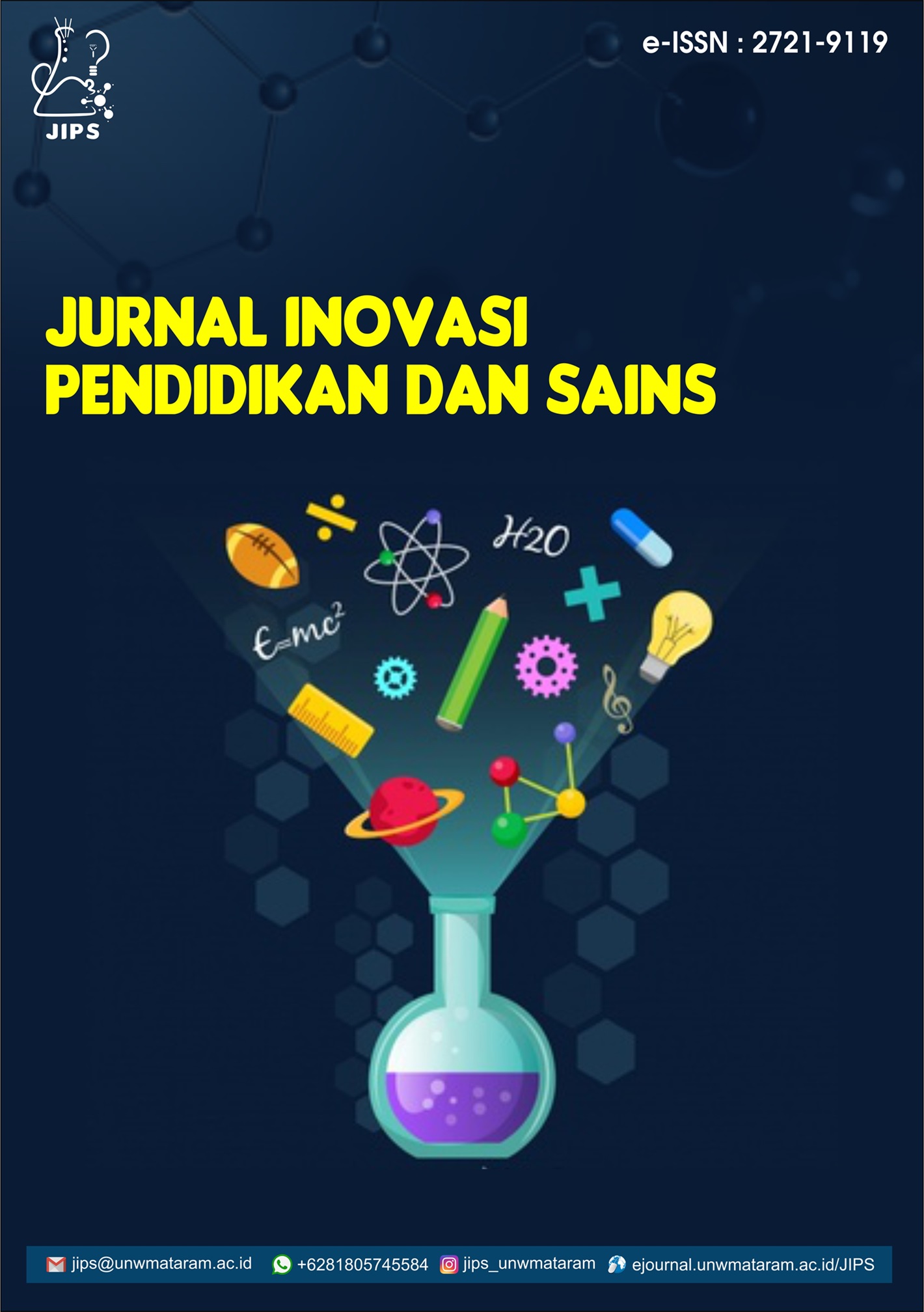Studi Adsorpsi Rhodamin B Menggunakan Silika Sekam Padi
Abstract
Silica was obtained from rice husk throught an extraction process and applied to remove Rhodamine B (RhB) from aqueous media by adsorption. The better characteristics of the silica were demonstrated by X-ray diffraction, N2 adsorption isotherms and scanning electron microscopy. Silica was used as adsorbent to remove RhB dye in aqueous media. Adsorption kinetics and isotherms were evaluated. Silica presented higher values of surface area, pore volume, pore diameter and porosity. Pseudo-second order was adequate to represent the kinetic profile. The adsorption isotherm follows the Langmuir and Freundlich models. Rice husk silica attained adsorption capacity of 1.06 mg g-1 coupled with removal percentage of 84%, being an excelent adsorbent for RhB dye.
References
Asnawati A, Kharismaningrum RR, Andarini, N. 2017. Penentuan kapasitas adsorpsi selulosa terhadap rhodamin b dalam sistem dinamis, Jurnal Kimia Riset, 2(1), 23–29.
Bagheri E, Ansari L, Abnous K, Taghdisi SM, Charbgoo F, Ramezani M, Alibolandi M. 2018. Silica based hybrid materials for drug delivery and bioimaging. Journal of Controlled Release, 277, 57–76.
Bakar RA, Yahya R, Gan SN. 2016. Production of High Purity Amorphous Silica from Rice Husk. Procedia Chemistry, 19, 189–195.
Bhagiyalakshmi M, Yun LJ, Anuradha R, Jang HT. 2010. Utilization of rice husk ash as silica source for the synthesis of mesoporous silicas and their application to CO2 adsorption through TREN/TEPA grafting. Journal of Hazardous Materials, 175(1), 928–938.
Chandrasekhar S, Satyanarayana KG, Pramada, PN, Raghavan P, Gupta TN. 2003. Review. Processing, Properties and Applications of Reactive Silica from Rice Husk — An Overview. Journal of Material Science, 35(6), 3159-3168.
Chuah TG, Jumasiah A, Azni I, Katayon S, Thomas Choong SY. 2005. Rice husk as a potentially low-cost biosorbent for heavy metal and dye removal: an overview. Desalination, 175(3), 305–316.
Freundlich HMF. 1906. Over the adsorption in solution. J. Phys. Chem, 57(385471), 1100–1107.
Gad HMH, El-Sayed AA. 2009. Activated carbon from agricultural by-products for the removal of Rhodamine-B from aqueous solution. Journal of Hazardous Materials, 168(2), 1070–1081.
Gan PP, Li SFY. 2013. Efficient removal of Rhodamine B using a rice hull-based silica supported iron catalyst by Fenton-like process. Chemical Engineering Journal, 229, 351–363.
Han H, Wei W, Jiang Z, Lu J, Zhu J, Xie J. 2016. Removal of cationic dyes from aqueous solution by adsorption onto hydrophobic/hydrophilic silica aerogel. Colloids and Surfaces A: Physicochemical and Engineering Aspects, 509, 539–549.
Hu Z, Zhang D, Wang J. 2011. Direct Synthesis of Amine-functionalized Mesoporous Silica for CO2 Adsorption. Chinese Journal of Chemical Engineering, 19(3), 386–390.
Inyinbor AA, Adekola FA, Olatunji GA. 2017. Liquid phase adsorptions of Rhodamine B dye onto raw and chitosan supported mesoporous adsorbents: isotherms and kinetics studies. Applied Water Science, 7(5), 2297–2307.
Jain R, Mathur M, Sikarwar S, Mittal A. 2007. Removal of the hazardous dye rhodamine B through photocatalytic and adsorption treatments. Journal of Environmental Management, 85(4), 956–964.
Kalapathy U, Proctor A, Shultz J. 2002. An improved method for production of silica from rice hull ash. Bioresource Technology, 85(3), 285–289.
Kosmulski M. 2016. Isoelectric points and points of zero charge of metal (hydr)oxides: 50years after Parks’ review. Advances in Colloid and Interface Science, 238, 1–61.
Langmuir I. 1918. The adsorption of gases on plane surfaces of glass, mica and platinum. Journal of the American Chemical Society, 40(9), 1361–1403.
Nurmasari R, Astuti MD, Umaningrum D, Khusnaria, DA. 2014. Kajian adsorpsi Rhodamin B pada humin, Prosiding Seminar Nasional Kimia, Jurusan Kimia FMIPA Universitas Negeri Surabaya, 203-210.
Pandiangan KD, Simanjuntak W. 2013. Sintesis katalis heterogen MgO-SiO2 sekam padi dengan metode sol-gel dan aplikasinya pada reaksi transesterifikasi minyak kelapa. Seminar Nasional Sains & Teknologi V Lembaga Penelitian Universitas Lampung, 516–524.
Prasetyawati DP. 2015. Pemanfaatan Kulit Jagung dan Tongkol Jagung (Zea mays) sebagai Bahan Dasar Pembuatan Kertas Seni dengan Penambahan Natrium Hidroksida (NaOH) dan Pewarna Alami (PhD Thesis). Universitas Muhammadiyah Surakarta.
Rajanna SK, Kumar D, Vinjamur M, Mukhopadhyay M. 2015. Silica Aerogel Microparticles from Rice Husk Ash for Drug Delivery. Industrial & Engineering Chemistry Research, 54(3), 949–956.
Roring SH, Pitoi MM, Abidjulu J. 2013. Isoterm Adsorpsi Rhodamin B Pada Arang Aktif Kayu Linggua, Jurnal MIPA Unsrat Online, 2(1), 40-43.
Soltani N, Bahrami A, Pech-Canul MI, González L A. 2015. Review on the physicochemical treatments of rice husk for production of advanced materials. Chemical Engineering Journal, 264, 899–935.
ten Hove M, Luiten-Olieman MWJ., Huiskes C, Nijmeijer A, Winnubst L. 2017. Hydrothermal stability of silica, hybrid silica and Zr-doped hybrid silica membranes. Separation and Purification Technology, 189, 48–53.
Ueasin N, Liao SY, Wongchai A. 2015. The Technical Efficiency of Rice Husk Power Generation in Thailand: Comparing Data Envelopment Analysis and Stochastic Frontier Analysis. Clean, Efficient and Affordable Energy for a Sustainable Future: The 7th International Conference on Applied Energy (ICAE2015), 75, 2757–2763.
Vijayakumar G, Tamilarasan R, Dharmendirakumar M. 2012. Adsorption, Kinetic, Equilibrium and Thermodynamic studies on the removal of basic dye Rhodamine-B from aqueous solution by the use of natural adsorbent perlite, Journal Material Environment, 3(1), 157-170.
Wang Y, Chen J, Lei X, Ren Y, Wu, J. 2018. Preparation of high silica microporous zeolite SSZ-13 using solid waste silica fume as silica source. Advanced Powder Technology, 29(5), 1112–1118.
Yalçin N, Sevinç V. 2001. Studies on silica obtained from rice husk. Ceramics International, 27(2), 219–224.
Yue W, Zhou W. 2008. Crystalline mesoporous metal oxide. Progress in Natural Science, 18(11), 1329–1338.
Yuvakkumar R, Elango V, Rajendran, V, Kannan, N. 2014. High-purity nano silica powder from rice husk using a simple chemical method. Journal of Experimental Nanoscience, 9(3), 272–281.



